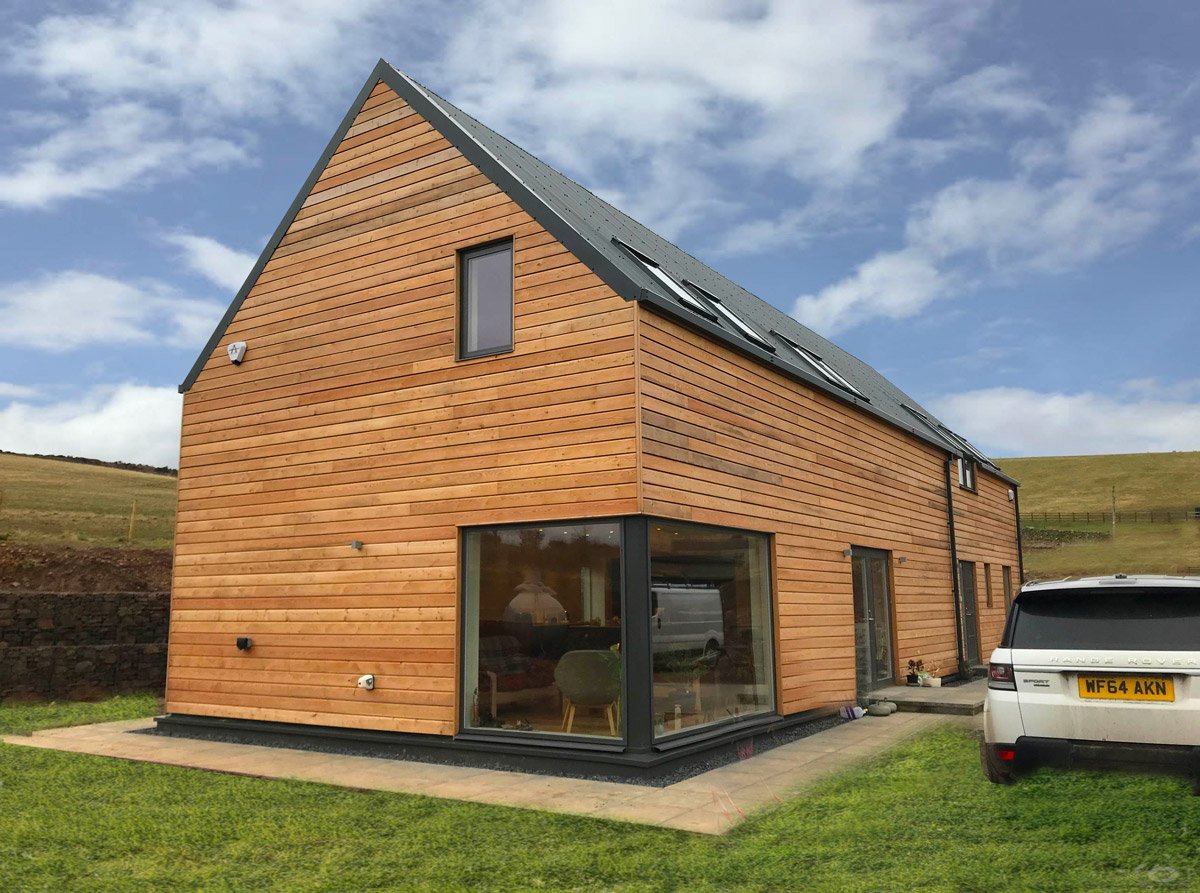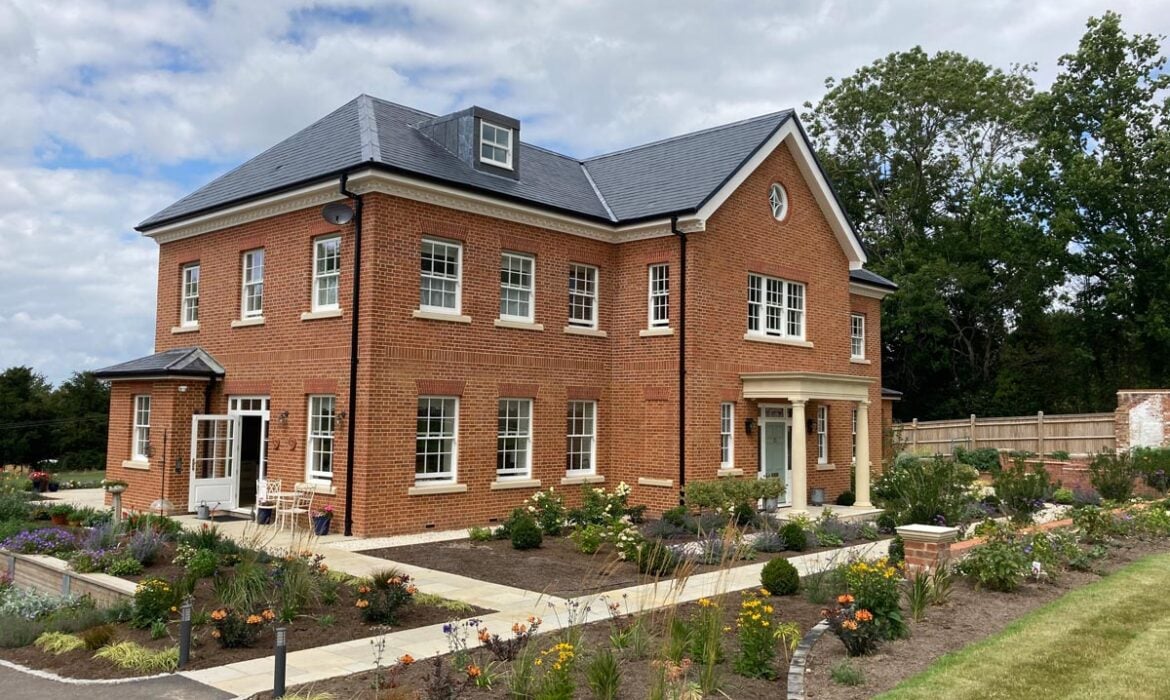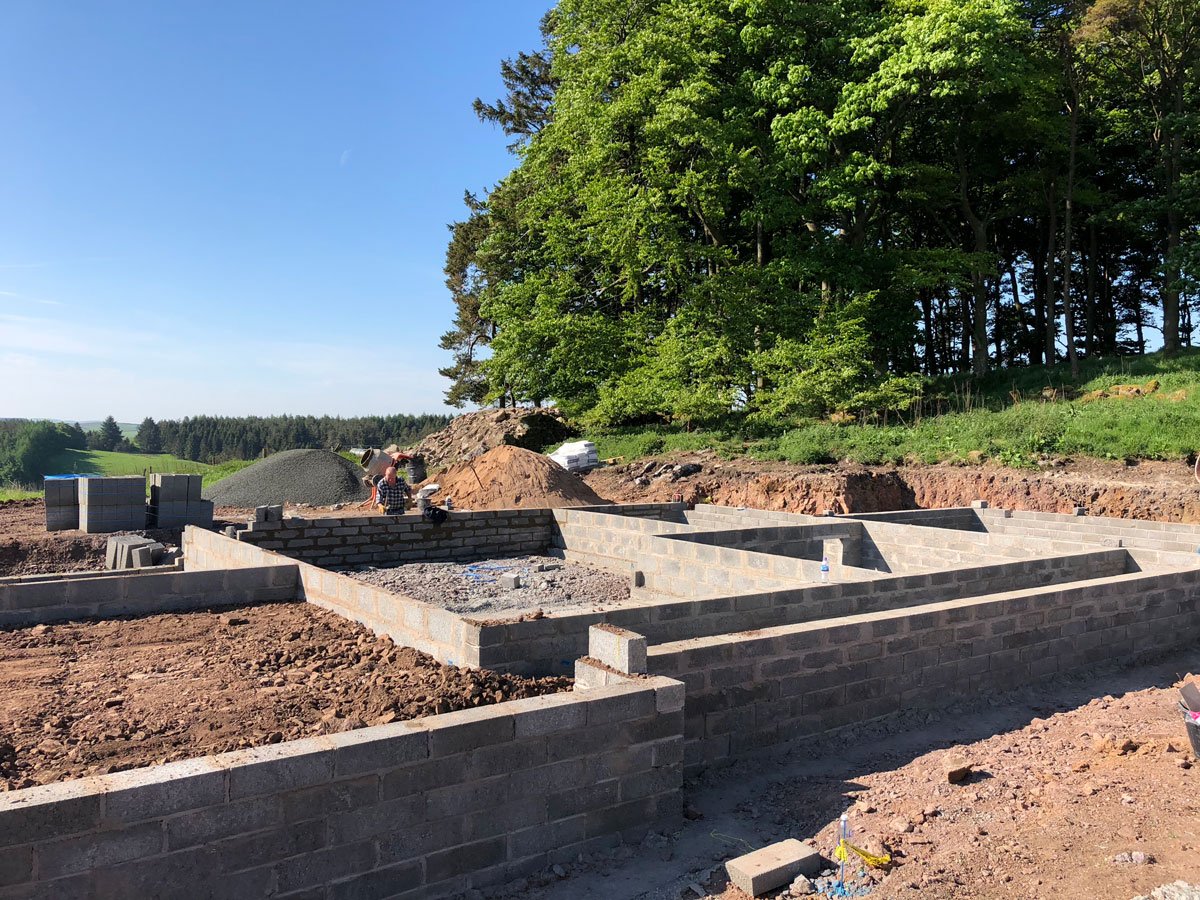Kirsty and Phil have been telling us for years now it’s all about…… Location, location, location! I wouldn’t disagree, but it’s easier said than done finding the right piece of land to build on. It can also be a minefield navigating between serviced plots, custom builds, or a scrap of land at the edge of your village.
Over the past 10 years, AC Architects have spoken to 1,000’s of excited self-builders looking to find that right plot. To set your expectations from the outset isn’t easy, and there are probably 10-15,000 other people trying to find that right plot also! It’s going to take time, and you will miss out on a couple of opportunities, so be patient.
This is the reason why we are going to try and answer as many questions as we can and provide you with the ultimate guide on finding and assessing land for your self-build in 2024.

WHERE TO START? WHAT DO I NEED TO CONSIDER?
Before I get into the detail, let’s try to establish 3 pieces of key information which will focus our search for the dream plot.
1. Work out where you want to live
2. What you can afford
3. What type of site do you want
I will go through each of these in detail (some require a more detailed explanation than others), and some areas will then have follow-on questions, which we can tackle later in the article.
WHERE DO YOU WANT TO LIVE?
This will normally be impacted by a few key considerations –
- Family – how close or far away do you want to be?
- Work – are you tied to a certain commuter distance to the office, or are you working from home or, like many of you, starting to think/enjoy retirement
- Plot costs – as with buying a completed home, plots cost vary dramatically depending on the location. They will also vary depending on the type of plot, which we will discuss later in this article
Once you have answered and prioritised the above factors, you should have a geographic location or a couple of areas which tick all the boxes!
The next step is to try and get specific and move from region or County into villages. The more specific you can be – the better.

WHAT CAN YOU AFFORD?
Working out your total project budget and affordability is one of the most important early steps you should take.
At ACA, we always direct our clients to BuildStore, who are the leading providers of lending in the Custom & Self build sector. They can carry out an initial assessment of your finances and affordability which will help inform your total budget.
You typically don’t want a general high street bank lending on your self build. The mortgage products generally just don’t fit with the process of building your own house.
Plots can range from anything from £70k to £300k, with some plots in higher value areas going from between £500k to £1M.
Historically, land prices don’t tend to fluctuate massively (with recessions or pandemics) because the landowners usually don’t have to sell them for a specific reason.
As a rule of thumb, we would estimate that the value of the plot might cost around 30% of the overall project value. Another estimation you can take off your total budget is professional costs/fees – which usually come in at 10% of your total budget.

WHAT TYPE OF SITE DO YOU WANT?
As you will know, there are lots of different types of plots available. I have taken time below to give a brief description of each along with pros vs cons!
1. Undeveloped or allocated land
This will be the cheapest advertised and also the highest-risk option available. The land typically won’t have any planning or services and be located in Greenfield or land outwith a settlement boundary. This, in general, will be in contradiction to the relevant planning policy and will be difficult to get support from the LPA.
If you are considering a plot like this, make your offer subject to obtaining planning permission. To limit your initial outgoings, we would suggest making a formal pre-application enquiry with the planners to gauge support for the principle of a new dwelling.
2. Serviced plots – with outline planning
The next stage up is a site that’s got outline planning permission granted. Therefore, someone has taken that parcel of land and established the principle of having a house on it. So, they’ve not said what the house is or what it looks like. They’ve just said can I have a house on this, which is more than enough for you then to go off and put an offer on it.
It’s de-risked massively, usually coming as a serviced plot, so they’ll have some form of either power, drainage and/or gas.
We would still suggest that you make your offer subject to obtaining planning permission
3. Serviced plots – with detailed/full planning
The next jump up from outline is something that’s got full planning, and most likely, at that point, they’ve worked with an architect, they’ve spent £3,000 to £6,000 getting a design and planning agreed.
It’s almost irrelevant whether you like that design or not. It’s more relevant that if you’re wanting to build a 2-storey house that’s 400 sqm, that it is a 2-storey house that’s about that sort of size. If they’ve got something like a really small bungalow, and you want to do something that’s 2 or 3 storeys, and it’s bigger than that, then you may not get it through.
As soon as a plot has planning approval, then it can be mortgaged, so you can borrow against the design of that house, both to purchase the land then to go off and get further borrowings on.
We would still suggest that you make your offer subject to obtaining planning permission.

These are other interesting options, which may open up, sites which have been ignored or discounted. Brownfield sites have had another use class, think commercial factory or yard, that is no longer in use. There is planning support for reusing these types of sites before open countryside
Gap sites may have been created between corner houses or plots with large gardens. They are easily visible from google earth maps. Similar to Brownfield plots, these have planning support and often are of great value.
Treat these like Option 1, potential for high risk, only make an offer subject to gaining planning approval.
5. Custom build sites
The growing movement of Custom Build in the UK fills a gap between volume house builders and self-builders. Providing an opportunity for a homeowner to have an involvement in the design and specification of their home. Usually on a development of 10+ serviced plots with outline planning approval.
The largest development in the UK is Graven Hill in Bicester, where some 1,700 homes will be built over a 10-year period.
Land enablers such as Custom Build Homes are leading the way, bringing custom build to the forefront of the housing market.
To some, this option seems crazy, buying a completed home to demolish the house to create a plot for a replacement dwelling. However, to some, this is a perfect solution. The plot has services, the principle of development is already established, and if you can get a run-down house – then the price will be reasonable!
If you plan to purchase the house with a mortgage, make sure your check out the bank’s position on demolition, as you will vastly devalue the plot on demolition.
7. Existing buildings for renovation and extensionIf you have run out of options to find that perfect plot for a new build, then maybe consider an existing building to renovate and extend.
You will be amazed at how much you can extend or convert some old properties. The big downside with this option is that, unlike a new dwelling, the project won’t be Zero VAT rated.

THE TRADITIONAL WAYS TO FIND PLOTS
The basic things that you can do is go on Plot Search and Plot Finder, two services that you can sign up for and get access to. The ones that are on here will have outline or full planning, they’ll be serviced, and they’ll be at a premium because it’s the easy way to find it.
The other way is then to give your details to all of the local estate agents like you would when you’re looking for a new house. Just say you’re looking for something that can be demolished to build your own house or you’re looking for a plot.
In each area, there will be a land specialist. They will go out, sometimes without the acknowledgement or deal with the land owner, but they’ll go and find bits of land that they think could be developed, put it on their website and bring it to market. There is a bit of legwork required here to try and find who it is that’s selling plots in rural locations.
THINKING OUT OF THE BOX
We’ve got clients that have a little bit more ingenuity and are putting adverts in the local paper, so you’ll then attract potentially people that have got large gardens that you can then divvy up and build a house on.
The next stage on from that is getting flyers done. Local printers will be able to do 2000 A5 prints for £20 or £30, and they’ll know the people that deliver the junk mail that annoys you, do a one-sided flyer saying you’re looking for a bit of land, set up a new free email address and ask people to contact you. These are the ways that you’ll get a little bit more, something that’s got more value, and you might get a deal or might get something that’s just not out there on the market yet.
WHAT SIZE OF THE PLOT DO I NEED?
This is an often-asked question, which is difficult to answer, given the number of parameters available – urban or rural, sloping or flat, infill or fresh countryside!
However, in a worst case (in an urban setting), we would suggest a garden ground-to-building ratio of at least 2:1 (ie 2 x the garden ground-to-building footprint).
As you move further into the open countryside, that ratio may go up past 4:1 (i.e. 4x the amount of garden ground).
We would suggest checking the supplementary planning guidance of the relevant LPA (local planning authority) you are considering building in for clarification.

HOW DO I ASSESS WHETHER THE PLOT IS RIGHT FOR ME?
Whatever plot or plots you focus on, it must meet either all or most of your key requirements. List these out and decide whether it scores highly enough – can you build your dream home on it, does it leave enough budget to build the house etc.? It is often easy at this stage to get blinded by sales particulars or a great deal and forget some key considerations.
Does it meet the following –
- Is it in the right location?
- Is it at the right budget? – does it leave enough to build what you want?
- Is it serviced and does it have planning approval (at least outline)?
- Can you practicably and financially satisfy all the planning conditions?
- If you are planning a low energy (fabric first or Passive House) project, then does the site lend itself to maximising solar gain and views?
If you are happy with the answers to the above questions, then it looks like you have found a winner. Now to secure it!
HOW DO I SECURE A PLOT?
If it’s something that’s got full planning permission that is a similar type of house that you want to do, proceed on, put an offer in, and you buy it.
If it’s got outline planning, or if it’s not got planning or if it’s full planning, but you don’t like the house, and it’s maybe a complete departure in terms of design, I would go in with an offer subject to obtaining detailed planning.
So most people at that point would put a £5,000 or £10,000 deposit in, can sit in Escrow with a solicitor, you’re showing buying and a bit of meaningfulness between you and the seller, and you almost get an exclusivity agreement on that plot, for 3 to 6 months. We then go off, get the design done, get it in for planning and as long as you get what you want, you then commit, but if not, you’ve got a route to get out. And most people would expect that it’s just the best way to de-risk what it is that you’re going to get.

NEXT STEPS
You now should be in a better position than most of the people who are out there searching for land – so it’s time to get serious with your search.
Rather than flicking through TikTok or Pinterest in the evenings, you need to be scouring the internet for suitable sites. At the weekends, you should get out and search suitable towns or villages and narrow down the list of desirable areas to live in.
Once you have found some exciting prospects, notify the sellers of your interest, and get in touch with ACA.
HOW CAN ACA HELP?
Well, where do ACA fit into all of this? Well, we have vast experience in quickly evaluating whether a site is right for you and your specific requirements.
We are here to help you and would like to offer a free site evaluation service for any site that you are seriously considering making an offer on. What we will include in our desktop review –
- Review your project brief and requirements
- Check the planning history of the site, including any conditions
- Review the suitability of access and services on the site
- Give basic advice on how best to proceed
I hope you found this ultimate guide useful. Now it’s over to you to put the time in to find that perfect plot, it won’t be easy, but it definitely will be worth it…… Good luck




